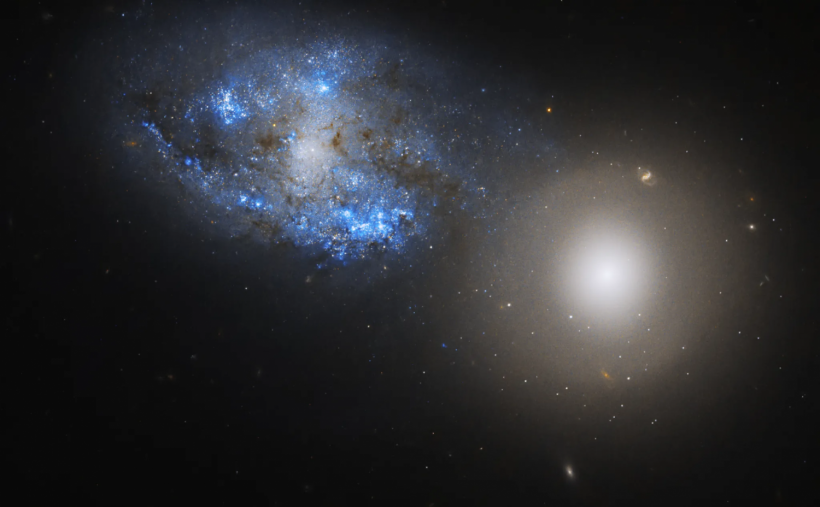NASA's Hubble Space Telescope has once again captivated us with a peculiar beauty in deep space. The iconic telescope captured a cosmic encounter between a barred spiral galaxy and a lenticular galaxy known as Arp 140.
NASA Hubble Space Telescope Captures Side-by-Side Galaxies
This unique celestial pair comprises NGC 274, the lenticular galaxy visible on the right, and NGC 275, the barred spiral galaxy on the left.
According to NASA, they are positioned in the constellation Cetus. NGC 275 is a striking illustration of barred spiral galaxies, distinguished by a distinct structural feature - a bar of stars that gracefully traverses the galaxy's central bulge.

In this captivating celestial encounter, a barred spiral galaxy and a lenticular galaxy unite, forming the interacting duo named Arp 140. Positioned within the constellation Cetus, the lenticular galaxy, NGC 274, graces the right side of the latest image captured by NASA's Hubble Space Telescope, while the barred spiral counterpart, NGC 275, takes its place on the left side.
The mesmerizing image captures the bright-white, vertical haze in NGC 275, accentuating the prominence of the central bar, the origin from which the galaxy's arms elegantly unfold into space.
In contrast, the lenticular galaxy NGC 274 represents an intermediary class, sharing characteristics with both elliptical and spiral galaxies.
When observed edge-on, lenticular galaxies showcase a disk-like profile featuring expansive central bulges and flattened spirals. Notably, these galaxies lack the prominent spiral arms seen in their barred spiral counterparts.
Lenticular galaxies present a distinctive structural dichotomy as they are primarily composed of aging stars and lack substantial gas and dust, according to NASA.
Scientists entertain several hypotheses regarding the evolution of lenticular galaxies. One conjecture posits that these galaxies originated as aging spirals, with their once-prominent arms gradually fading over time.
An alternative theory suggests that lenticular galaxies took shape through a merging process arising from the fusion of distinct spiral galaxies.
Read Also: NASA Hubble Discovers Saturn's Ring System Heats Planet's Atmosphere-A Never-Before-Seen Phenomenon!
Bright Interacting Galaxies
In another cosmic revelation, the Hubble Space Telescope unveiled an intriguing image of a group of interacting galaxies named LEDA 60847.
At the heart of this cosmic dance lies an active galactic nuclei (AGN), indicative of galaxies hosting supermassive black holes at their cores.
These black holes voraciously accrete surrounding material, emitting radiation across the electromagnetic spectrum, creating a luminous spectacle that aids astronomers in unraveling the mysteries of supermassive black hole growth and its influence on their host galaxies.
Galactic mergers are a common cosmic phenomenon, shaping the intricate dance observed in LEDA 60847. NASA noted that most larger galaxies, including our own Milky Way, bear the imprints of smaller galaxies merging over cosmic epochs.
Astronomical estimates suggest that anywhere from 5% to 25% of all galaxies engage in this mesmerizing choreography of merging. The Hubble image is a seamless fusion of ultraviolet, visible, and near-infrared data, underscoring the telescope's unparalleled capacity to explore the cosmos across diverse wavelengths.
Related Article: NASA's Hubble Space Telescope Captures 'Butterfly Nebula' In Stunning Motion | Fun Facts About This Beautiful Space Butterfly










